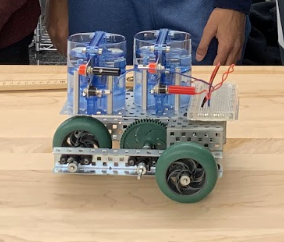Projects

Python Escape Room
In this project, I created a virtual Python Covid Escape Room in which the user would have to solve riddles to escape.

MIT App Inventor Game
This project features a game made in MIT App Inventor which is centered around putting out fires.

Project Compound
In this project, I built a compound simple machine using VEX Robotics parts. The machine has 4 different simple machines.

Solar Hydrogen Car
In this project, I created a tri-wheeled vehicle powered by hydrogen fuel cells using VEX parts and breadboard.

Automated Scouting
In this personal project, I created an automating scouting program for my VEX robotics team using Python.

Python Turtle Art
In this project, I created a piece of art using Python Turtle that supported a DHS club or activity.

Clever Cyber Cats
Throughout this project, I investigated the mysterious behavior of a fish tank using cybersecurity techniques and developed a client report detailing all of the breaches.






